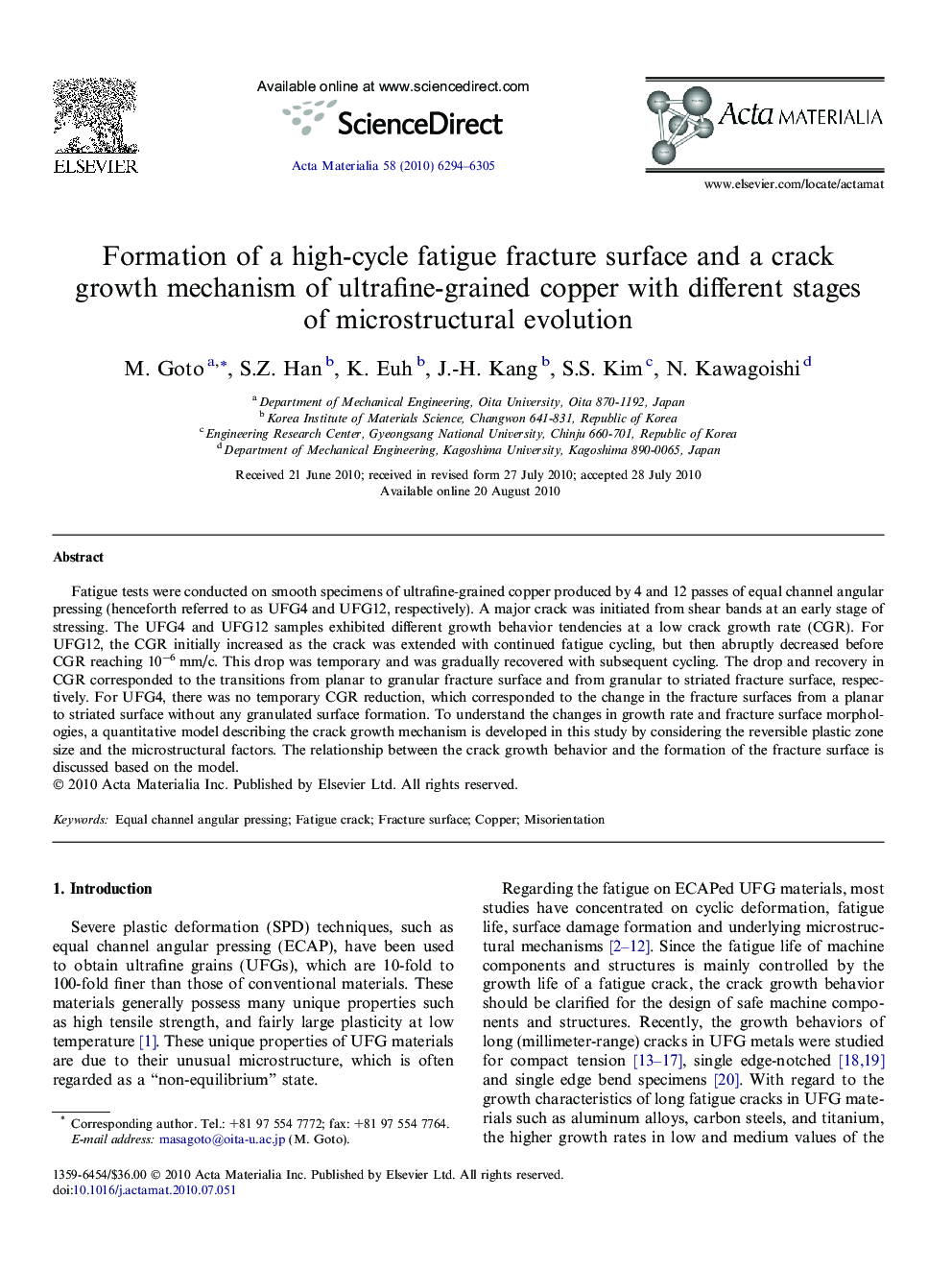| Article ID | Journal | Published Year | Pages | File Type |
|---|---|---|---|---|
| 10620651 | Acta Materialia | 2010 | 12 Pages |
Abstract
Fatigue tests were conducted on smooth specimens of ultrafine-grained copper produced by 4 and 12 passes of equal channel angular pressing (henceforth referred to as UFG4 and UFG12, respectively). A major crack was initiated from shear bands at an early stage of stressing. The UFG4 and UFG12 samples exhibited different growth behavior tendencies at a low crack growth rate (CGR). For UFG12, the CGR initially increased as the crack was extended with continued fatigue cycling, but then abruptly decreased before CGR reaching 10â6Â mm/c. This drop was temporary and was gradually recovered with subsequent cycling. The drop and recovery in CGR corresponded to the transitions from planar to granular fracture surface and from granular to striated fracture surface, respectively. For UFG4, there was no temporary CGR reduction, which corresponded to the change in the fracture surfaces from a planar to striated surface without any granulated surface formation. To understand the changes in growth rate and fracture surface morphologies, a quantitative model describing the crack growth mechanism is developed in this study by considering the reversible plastic zone size and the microstructural factors. The relationship between the crack growth behavior and the formation of the fracture surface is discussed based on the model.
Related Topics
Physical Sciences and Engineering
Materials Science
Ceramics and Composites
Authors
M. Goto, S.Z. Han, K. Euh, J.-H. Kang, S.S. Kim, N. Kawagoishi,
